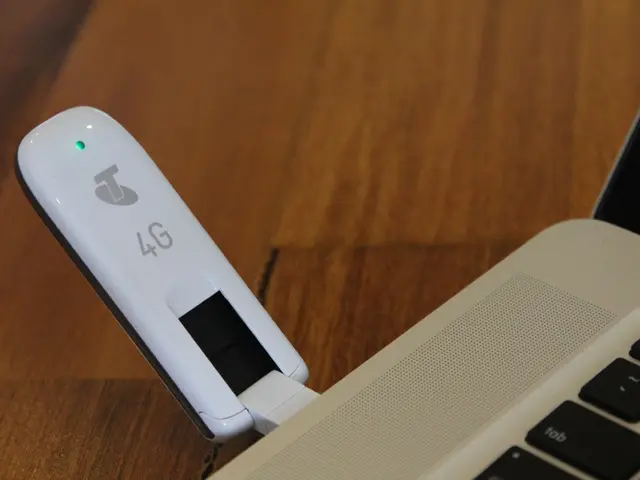Constructing a Gaming PC: What Are the Key Stages?
Building a gaming PC is an exhilarating endeavor, transforming you into the architect of your own high-performance gaming empire! If you're ready to take the plunge into custom builds, our guide's got your back. Gear up for an unforgettable adventure with this step-by-step, master guide to constructing your gaming powerhouse!
What Tools and Preparations are a Must for Building a Gaming PC?
What tools are required for PC assembly?
Arming yourself with the right tools is the first step to a successful build. Let's dive into the essentials:
- Phillips head screwdriver (size #2): The versatile workhorse for most screwing duties during assembly.
- Anti-static wrist strap: Necessary for warding off static electricity, protecting your components from harm.
- Pliers or tweezers: Perfect for managing minute screws and other tiny components.
- Flashlight: A must-have for brighter work in those hard-to-reach spaces.
- Cable ties: Handy for keeping your wires clean and organized.
- Soft cloth: Purr-fect for whisking away dust and smudges from parts.
Though the list may seem simple, each tool plays a vital role in ensuring your build's success.
How do you prepare your workspace for building a gaming PC?
Your workspace setup lays the groundwork for a win-win PC build. So, grab a comfy chair and master our workspace preparation methods:
- Find a suitable work surface: A sturdy table or large desk will do the trick. Be sure to clean any existing mess before you start.
- Ensure proper lighting: Bright, focused light makes it much easier to spot those tiny screws or connectors.
- Deal with static electricity: Avoid carpets, as they generate static charges more readily. Work near a grounded metal surface to help discharge any unwanted static.
- Avoid distractions: Make your workspace clutter-free, ensuring it's a sanctuary for precision work.
Don't Ignore Anti-static Precautions
Static electricity is the silent assassin of sensitive components. To protect your investment in your build, follow these anti-static measures:
- Wear an anti-static wrist strap: This connects you to a grounded metal surface, safeguarding your components as you work.
- Move slowly and carefully: Be mindful of your actions to limit the generation of static charges, avoiding any unnecessary shocks to your parts.
With static safety in hand, you'll breeze through your build with peace of mind, focusing on the task rather than unseen risks.
Safeguard your wisdom with these time-tested mantras:
- Take care of your components before they're damaged.
- Take precautions to ensure a safe build experience.
Now, that you've set the stage for success, let's explore the world of compatibility to find your dream parts!
Choosing the Perfect Parts for Your Gaming PC
How do you ensure compatibility between your PC components?
Ensuring your parts will play nicely together is the name of the game. Here are the elements you'll want to consider to maintain compatibility as you assemble your gaming cyborg:
- Verify CPU compatibility: Confirm that your motherboard's CPU socket matches your CPU choice.
- Match RAM types: Make sure your RAM fits properly into your motherboard. Usually, you'll be working with DDR4 or DDR3 memory.
- GPU fit: Ensure your chosen GPU will fit both your case and motherboard, with a focus on proper airflow.
- Check PSU wattage: Matches your components' power requirements to ensure each part gets sufficient juice.
- Consider motherboard factors: Focus on form factor, chipset, future-proofing, connectivity, firmware, and brand quality.
- Part picker tools: Useful for selecting compatible parts, double-checking wattage, and verifying compatibility before your shopping trip.
Building an efficient, top-tier gaming PC is all about consistency and synergy among your components. With the information above, you now have the foundation you need to make informed, compatible choices.
Move forward with confidence, knowing you've armed yourself with a wealth of knowledge to make your dream gaming PC a reality!
Mastering the Art of Assembly
The perfect assembly steps
With your tools at the ready and compatible parts assembled, it's time to dive into the heart of the build. Follow this step-by-step guide to complete assembling your gaming machine:
- Prepare your workspace: This still holds; take a moment to clean, light, and static-proof your area.
- Install the CPU and cooler: Carefully secure the CPU to the motherboard, apply thermal paste, and affix the cooler.
- Install your RAM: Gently slot the memory sticks into their respective slots, ensuring proper alignment and locking them into place with clips.
- Prepare your storage: Install M.2 SSDs, SATA SSDs, or HDDs within the case, connecting their power and data cables to the motherboard and PSU.
- Attach your GPU: Secure your graphics card to its slot on the motherboard, ocasionally using backplates for reinforcement.
- Fan and RGB control unit installation: Position the case fans and RGB control units as needed, connecting them to the motherboard header, ensuring proper airflow and aesthetics.
- Secure the motherboard: Slide your motherboard into your chosen case, making any necessary cable routing adjustments, and secure it using the standoffs and screws.
- Connect power and data: Connect the necessary power, data, and audio cables to their respective connectors on the motherboard and peripherals.
- Install the power supply: Tuck the power supply neatly into your case, making sure it's anchored securely.
- Attach the side panels: Affix both side panels onto your case, screwing them into place.
- Test your build: Power up your device, verify that the system boots without issue, and start downloading your game library!
Following these steps will guide you through constructing the perfect, customized gaming machine. Whether you're a seasoned DIY elite or tackling your first build, your gaming prowess awaits!
Performance, Optimization, and Future Prospects
With your PC assembled, let's fine-tune performance and chart the course for future upgrades!
How to optimize performance
To reach the pinnacle of performance, follow these steps to unlock your gaming PC's hidden potential:
- Run performance tests: Utilize benchmarking software like 3DMark or Superposition to assess your device's capabilities. Focus on frames per second (FPS) and temperature, ensuring both are optimized.
- Maintain good cooling: Employ proper airflow techniques, using fans and a liquid cooling solution if necessary. Overclocking demands special attention when it comes to cooling according to your component manufacturer's guidelines.
- Optimize game settings: Adjust your in-game settings based on personal preference, emphasizing FPS and temperature management.
- Keep your system updated: Install operating system and driver updates as they come, increasing overall performance and stability.
Future expansion
Expanding your gaming PC is a breeze with careful planning. With a focus on upgrade-ready components, you'll be well-prepared for the future:
- Select upgrade-friendly motherboards: Choose boards that accommodate more RAM and GPU slots, opening your build to future upgrades.
- Calculate accurate power supply ratings: Ensure your PSU can meet the power requirements of your intended upgrades to prevent any potential issues.
- Monitor your device's performance: Keep tabs on component usage, utilizing helpful programs like HWMonitor, capping out when it's time for a hardware upgrade.
- For a thorough gaming experience, functional gadgets such as a Phillips head screwdriver, anti-static wrist strap, pliers or tweezers, flashlight, cable ties, and a soft cloth are essential tools when building a hardware-packed gaming PC.
- Dive into the realm of hardware synergy by carefully considering compatibility between your gaming PC components. This includes verifying CPU compatibility, matching RAM types, ensuring GPU fit, checking PSU wattage, contemplating motherboard factors, and utilizing part picker tools.







